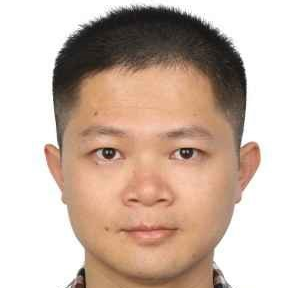Foundation Treatment and Building Structural Performance Enhancement
A special issue of Buildings (ISSN 2075-5309). This special issue belongs to the section "Building Structures".
Deadline for manuscript submissions: closed (20 December 2025) | Viewed by 28108
Special Issue Editors
Interests: geotechnical engineering; tunnel engineering
Special Issues, Collections and Topics in MDPI journals
Interests: progressive failure of brittle rock; EDZ characteristics of rock mass in both tunnel and slope; application of UAV photogrammetry for quantitative characterization of rock mass
Interests: geotechnical engineering; tunnelling engineering; ground Improvement; grouting
Interests: polluted soil; leaching action; solute migration; heavy metal pollution; environmental protection
Special Issues, Collections and Topics in MDPI journals
Interests: nature-based solution to cope with climate change; sustainable barrier systems for pollution control in waste disposal facilities using recycled wastes; energy harvesting and storage systems
Special Issue Information
Dear Colleagues,
In recent years, with the acceleration of urbanization, the stability of building structures has become a matter of great concern. Foundation treatment, as one of the important means of improving the stability of buildings, is crucial to securing the safety of buildings. In the process of foundation treatment, multiple factors such as geological conditions, building characteristics, and foundation treatment methods should be considered comprehensively. Through appropriate foundation treatment methods, the bearing capacity of the foundation can be improved and the stable connection between the building and the foundation can be increased, thereby enhancing the performance of the building structure.
This Special Issue of Buildings, entitled “Foundation Treatment and Building Structural Performance Enhancement” will provide an overview of existing knowledge on new methods of foundation treatment and building structure performance enhancement. We invite authors to submit original research, theoretical and experimental work, case studies, and comprehensive review papers for possible publication. Topics relevant to this Special Issue include, but are not limited to, the following subjects:
- New methods for foundation treatment and enhancing the performance of building structures;
- Low-carbon foundation treatment and building structural performance enhancement technology;
- Innovative and sustainable foundation treatment and building structural materials;
- Digital methods applied to foundations and building structures;
- Performance evaluation of foundations and building structures;
- Reliability and maintenance engineering of foundations and building structures;
- Intelligent monitoring of foundations and building structures;
- The application of intelligent integrated machinery in foundation treatment and building structures.
Dr. Jiangbo Xu
Dr. Peng Sha
Prof. Dr. Zhi-Feng Wang
Dr. Jiangshan Li
Dr. Song Feng
Guest Editors
Manuscript Submission Information
Manuscripts should be submitted online at www.mdpi.com by registering and logging in to this website. Once you are registered, click here to go to the submission form. Manuscripts can be submitted until the deadline. All submissions that pass pre-check are peer-reviewed. Accepted papers will be published continuously in the journal (as soon as accepted) and will be listed together on the special issue website. Research articles, review articles as well as short communications are invited. For planned papers, a title and short abstract (about 250 words) can be sent to the Editorial Office for assessment.
Submitted manuscripts should not have been published previously, nor be under consideration for publication elsewhere (except conference proceedings papers). All manuscripts are thoroughly refereed through a single-blind peer-review process. A guide for authors and other relevant information for submission of manuscripts is available on the Instructions for Authors page. Buildings is an international peer-reviewed open access semimonthly journal published by MDPI.
Please visit the Instructions for Authors page before submitting a manuscript. The Article Processing Charge (APC) for publication in this open access journal is 2600 CHF (Swiss Francs). Submitted papers should be well formatted and use good English. Authors may use MDPI's English editing service prior to publication or during author revisions.
Keywords
- foundation treatment technology
- structural performance enhancement
- low-carbon technology
- intelligent and digital engineering
- intelligent machinery
- building materials
- safety and stability
- engineering applications of new materials
Benefits of Publishing in a Special Issue
- Ease of navigation: Grouping papers by topic helps scholars navigate broad scope journals more efficiently.
- Greater discoverability: Special Issues support the reach and impact of scientific research. Articles in Special Issues are more discoverable and cited more frequently.
- Expansion of research network: Special Issues facilitate connections among authors, fostering scientific collaborations.
- External promotion: Articles in Special Issues are often promoted through the journal's social media, increasing their visibility.
- Reprint: MDPI Books provides the opportunity to republish successful Special Issues in book format, both online and in print.
Further information on MDPI's Special Issue policies can be found here.









